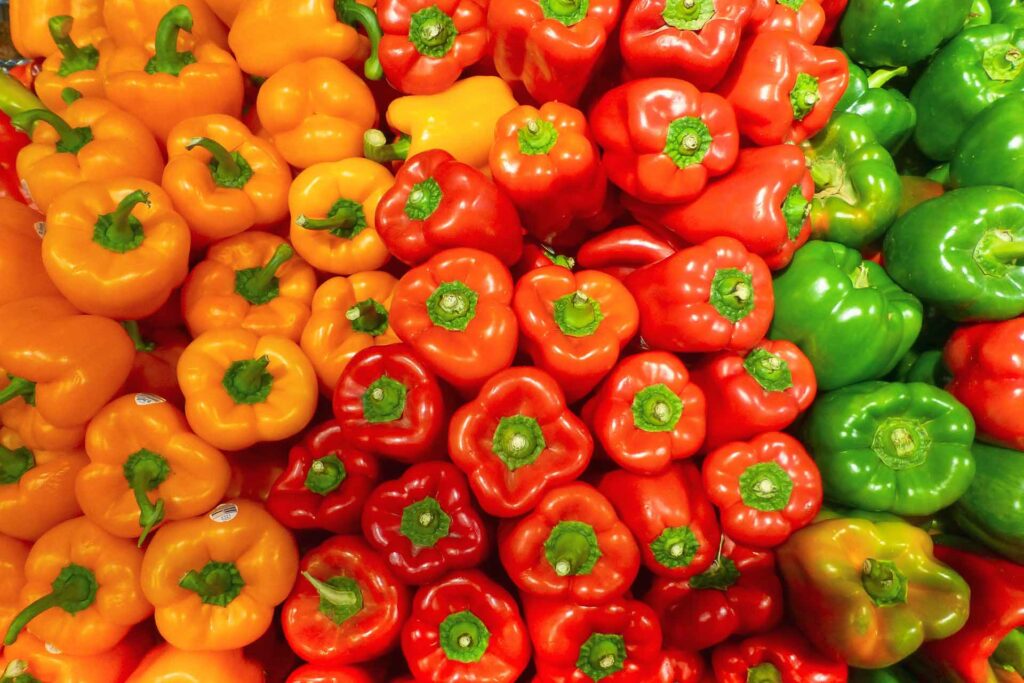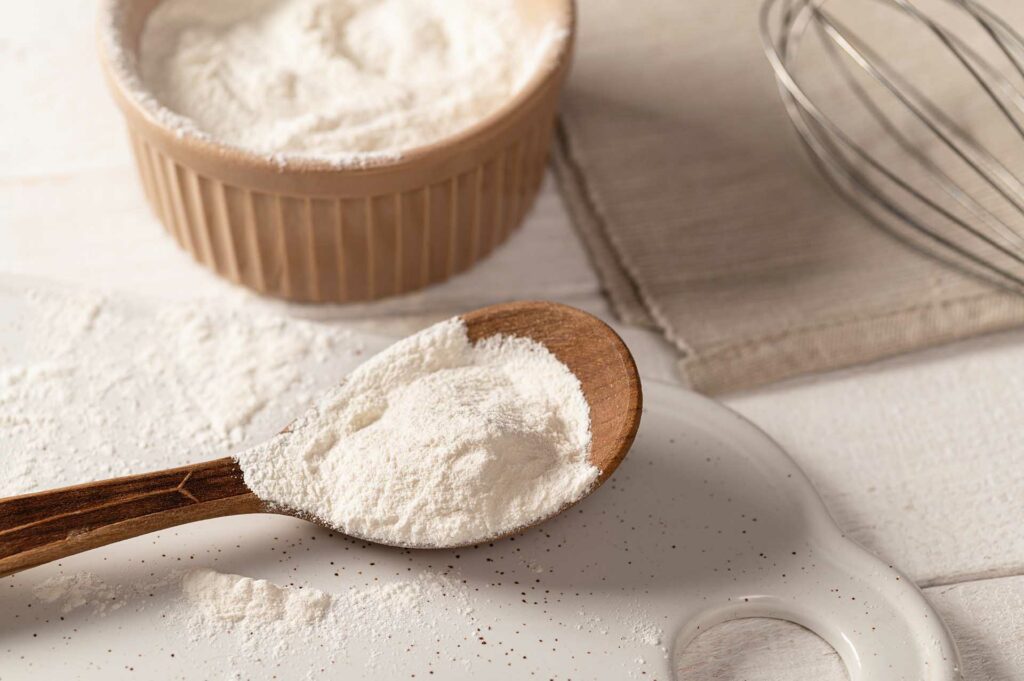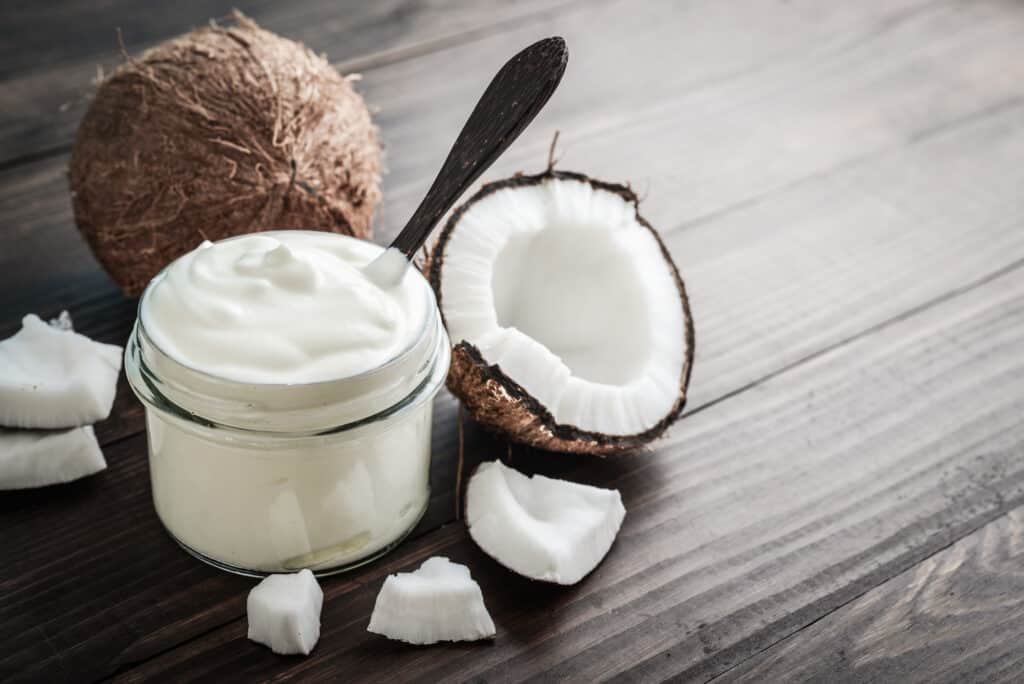When it comes to adding a burst of vibrant color, crisp texture, and a distinctive flavor to culinary dishes, bell peppers have long been a go-to ingredient for chefs and home cooks alike. Whether used in salads, stir-fries, or stuffed recipes, bell peppers bring a unique taste and visual appeal to the table. However, there are times when you may find yourself in need of a bell pepper substitute, whether due to personal preference, dietary restrictions, or simply because you ran out of this versatile vegetable.
In this blog, we’ll dive into the world of bell pepper substitutes, exploring a wide range of alternatives that will help you maintain the essence and integrity of your recipes. From sweet and crunchy options to spicy and tangy alternatives, we will uncover a variety of substitutes that can mimic the taste, texture, and appearance of bell peppers, ensuring that your dishes remain flavorful and visually appealing.
Understanding the Flavor Profile of Bell Peppers
Before we delve into the substitutes, let’s take a moment to appreciate the unique flavor profile of bell peppers. These versatile vegetables come in various colors, including green, red, yellow, and orange, each with its own distinct taste and aroma. Bell peppers are known for their mild, slightly sweet flavor, with the red variety being the sweetest and the green variety offering a slightly more bitter note. The different colors also vary in terms of their nutritional properties and ripeness levels.
Bell Pepper Substitutes: Alternatives by Taste and Texture
In this section, we will explore a range of bell pepper substitutes that can be classified based on their taste and texture. Whether you are looking for a sweet and crunchy option, a spicy and tangy alternative, or a colorful and mild substitute, we’ve got you covered.
Sweet and Crunchy Alternatives
- Cubanelle Pepper: With its mild and slightly sweet taste, the cubanelle pepper is an excellent substitute for bell peppers. It offers a similar crunchy texture and can be used in a variety of recipes, including salads, sandwiches, and stir-fries.
- Pimento Pepper: Known for its vibrant red color and sweet flavor, the pimento pepper is a popular choice for substituting bell peppers in recipes. It adds a touch of sweetness and a hint of smokiness, making it a great option for stuffed dishes and sauces.
- Shishito Pepper: Although shishito peppers are typically enjoyed for their mild heat, they can also serve as a substitute for bell peppers. These slender green peppers have a crisp texture and a slightly grassy flavor, making them a versatile addition to stir-fries, tempura, or even as a topping for pizzas.
Spicy and Tangy Alternatives
- Banana Pepper: For those who enjoy a bit of heat, the banana pepper is an excellent substitute. It offers a mild to medium level of spiciness and a tangy flavor that complements a variety of dishes, including sandwiches, salsas, and pickled preparations.
- Anaheim Pepper: With a slightly milder heat than the banana pepper, the Anaheim pepper can be used as a substitute for bell peppers in recipes that require a touch of spiciness. Its flesh is thin and crisp, making it perfect for roasting, grilling, and stuffing.
- Hungarian Wax Pepper: If you’re looking for a substitute that brings both heat and tang, the Hungarian wax pepper fits the bill. These vibrant yellow peppers have a medium to hot level of spiciness and a tangy flavor that pairs well with grilled meats, salsas, and spicy sauces.
Colorful and Mild Alternatives
- Cubanelle Pepper (mentioned again): Besides being a sweet and crunchy alternative, cubanelle peppers can also serve as a mild substitute for bell peppers when it comes to adding color to your dishes. They are particularly suitable for recipes that require sautéing or frying.
- Italian Frying Peppers: These long and slender peppers come in various colors, including yellow, orange, and red. They have a mild, slightly sweet taste and a tender texture, making them an excellent choice for frying, grilling, or sautéing.
- Marconi Pepper: With its elongated shape and deep red color, the Marconi pepper is a visually appealing substitute for bell peppers. It offers a mild flavor and a crisp texture, making it suitable for dishes ranging from salads to sandwiches.
Bell Pepper Substitutes: Alternatives by Color and Appearance
Another aspect to consider when seeking bell pepper substitutes is their color and appearance. Bell peppers come in a range of vibrant hues, including red, green, yellow, and orange. Each color not only adds visual appeal to a dish but also contributes unique flavors and nutritional properties. In this section, we will explore substitutes for different colored bell peppers, ensuring that you can maintain the visual allure of your recipes while introducing alternative ingredients.

Red Bell Pepper Substitutes
- Roasted Red Peppers: When it comes to substituting red bell peppers, one excellent option is roasted red peppers. These peppers are bell peppers that have been roasted until their skin is charred, then peeled and often preserved in oil or vinegar. Roasted red peppers offer a slightly smoky, sweet, and tangy flavor, making them a fantastic addition to salads, sandwiches, pasta dishes, and spreads like hummus or tapenade.
- Paprika: As a spice derived from ground bell peppers, paprika can also serve as a substitute for red bell peppers. It offers a deep red color and a mild, slightly sweet flavor. Paprika is commonly used to add color and flavor to dishes like stews, soups, sauces, and rice dishes. It can be used as a seasoning or even as a garnish to enhance the visual appeal of your culinary creations.
- Tomato: For a vibrant red appearance and a touch of acidity, tomatoes can be a suitable substitute for red bell peppers. While they don’t possess the same crunch as bell peppers, tomatoes offer a fresh and juicy component that adds brightness to dishes. They can be used in salads, sauces, salsas, or even roasted to bring out their natural sweetness and depth of flavor.
Green Bell Pepper Substitutes
- Poblano Pepper: When it comes to substituting green bell peppers, the poblano pepper is an excellent alternative. Poblanos have a slightly spicier flavor compared to green bell peppers, but they share a similar earthy taste. They have a thick, meaty flesh that holds up well in various cooking methods such as roasting, grilling, or stuffing. Poblanos are commonly used in Mexican cuisine, particularly in dishes like chiles rellenos and salsas.
- Green Chile Pepper: If you’re looking for a substitute with a bit more heat, green chile peppers are a great choice. These peppers offer a spicier kick compared to bell peppers, making them an ideal alternative for those who enjoy a bit of heat in their dishes. Green chile peppers are commonly used in Southwestern and Mexican cuisine, adding a fiery flavor to salsas, stews, and sauces.
- Zucchini: While not a perfect match in terms of flavor, zucchini can be a decent substitute for green bell peppers when it comes to color and texture. Zucchinis have a mild, slightly sweet taste and a tender texture, which can complement a variety of recipes. They can be sautéed, grilled, or roasted, adding a touch of freshness and vibrant green color to your dishes.
Yellow and Orange Bell Pepper Substitutes
- Yellow or Orange Sweet Peppers: When looking for a substitute for yellow or orange bell peppers, sweet peppers in the same color range are an ideal choice. These peppers have a similar mild, sweet flavor and a crisp texture. They can be used in a variety of recipes, including stir-fries, salads, fajitas, or as a colorful addition to side dishes.
- Carrots: Although not typically associated with bell peppers, carrots can be a surprising substitute for their vibrant yellow or orange counterparts. Carrots offer a slightly sweet taste and a satisfying crunch when raw or when cooked to a tender consistency. They can be grated, sliced, or julienned to add color and texture to salads, stir-fries, soups, and casseroles.
- Butternut Squash: For a substitute that not only provides a vibrant color but also adds a touch of sweetness and a creamy texture, butternut squash is an excellent choice. When cooked, butternut squash offers a slightly nutty flavor and a smooth, velvety consistency. It can be roasted, pureed, or used in soups, stews, and even savory pies, providing a delightful visual appeal to your dishes.
Guidelines for Substituting Bell Peppers
When substituting bell peppers with alternatives, it’s important to consider the flavor and characteristics of the substitute in relation to your recipe. Here are some guidelines to keep in mind:
- Match the flavor profile: Select a substitute that closely matches the flavor profile of the bell pepper required in the recipe. For example, if the recipe calls for a mild and slightly sweet bell pepper, consider substitutes like Cubanelle Pepper or Yellow or Orange Sweet Peppers.
- Consider the heat level: If the recipe calls for a specific level of spiciness, choose a substitute that matches or adjusts accordingly. For milder heat, options like Cubanelle Pepper or Poblano Pepper work well, while for added heat, consider substitutes like Banana Pepper or Green Chile Pepper.
- Adjust seasoning: Keep in mind that the flavor profile of the substitute may differ slightly from bell peppers. Taste your dish as you cook and adjust the seasoning accordingly to achieve the desired flavor balance.
Adjustments to Cooking Techniques
Different substitutes may require slight adjustments to cooking techniques to ensure optimal results. Here are a few tips to consider:
- Sautéing and stir-frying: When using substitutes like Cubanelle Pepper or Zucchini, be mindful of their cooking time as they may cook faster than bell peppers due to their thinner flesh. Adjust the cooking time accordingly to prevent overcooking.
- Roasting and grilling: Substitutes like Poblano Pepper or Butternut Squash can be roasted or grilled to add a smoky flavor and enhance their natural sweetness. Adjust the cooking time and temperature as needed, as these substitutes may require slightly longer cooking times compared to bell peppers.
- Stuffing and baking: If you’re using substitutes for stuffed dishes, such as Pimento Pepper or Anaheim Pepper, be aware of their size and texture. Make sure the substitute is suitable for holding the stuffing and adjust the baking time accordingly to ensure the filling is cooked through.
Combining Different Substitutes
For a more complex and well-rounded flavor, consider combining different substitutes in your recipes. For example, you can use a combination of Cubanelle Pepper and Banana Pepper to add both sweetness and heat to a dish. Experimenting with different combinations can lead to unique flavor profiles that elevate your culinary creations.
Final Thoughts
Throughout this comprehensive blog post, we have explored the world of bell pepper substitutes and discovered a wide array of alternatives that can be used to enhance your culinary creations. From sweet and crunchy substitutes like Cubanelle Pepper and Pimento Pepper to spicy and tangy options such as Banana Pepper and Hungarian Wax Pepper, each substitute offers a unique flavor profile that can elevate your dishes to new heights.
We also delved into substitutes based on color and appearance, providing alternatives for red, green, yellow, and orange bell peppers. Whether it’s the smoky sweetness of roasted red peppers, the vibrant green heat of poblano peppers, or the bright orange hue of butternut squash, these substitutes add visual appeal while contributing their own distinct flavors to your recipes.
To ensure success when using bell pepper substitutes, we provided tips and tricks to guide you in selecting the right substitute, adjusting cooking techniques, and combining different alternatives for a well-rounded flavor experience. We also shared handling and storage tips to help you maintain the freshness and quality of your substitutes.
By embracing bell pepper substitutes, you open up a world of possibilities in your culinary endeavors. Whether you’re looking to cater to personal preferences, accommodate dietary restrictions, or simply explore new flavors, these alternatives allow you to maintain the essence and integrity of your recipes.
So, the next time you find yourself without bell peppers or want to try something different, don’t hesitate to experiment with the substitutes mentioned in this blog post. Let your creativity soar as you create delicious dishes that are both visually appealing and bursting with flavor.
Remember, cooking is an art, and exploring substitutes is part of the journey. Embrace the versatility of bell pepper substitutes and continue to expand your culinary repertoire. Happy cooking!





